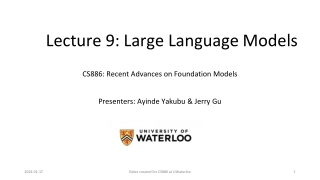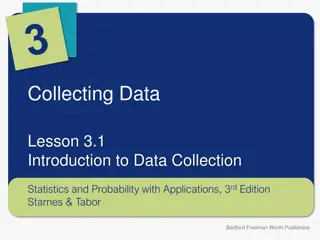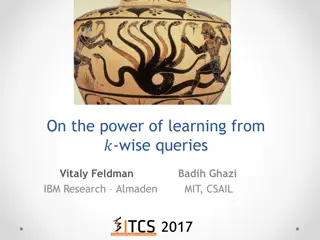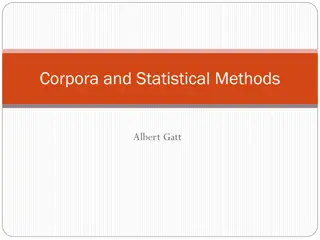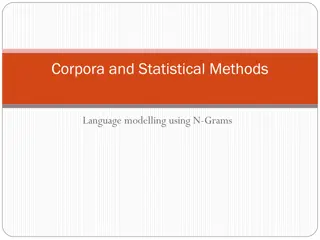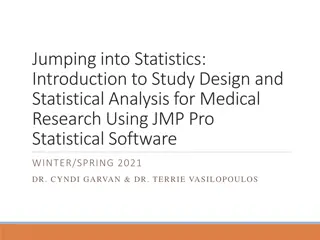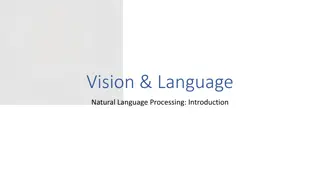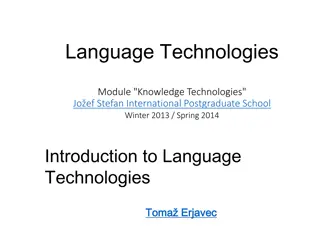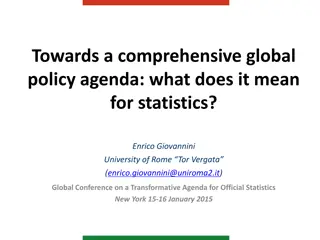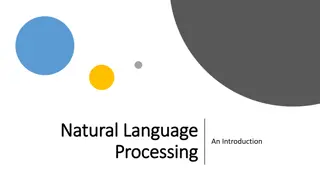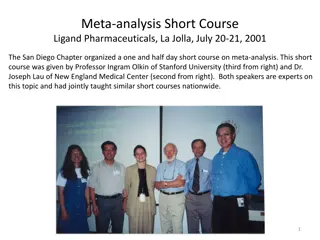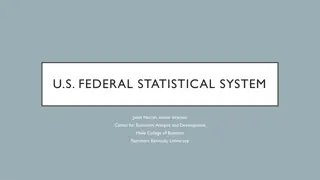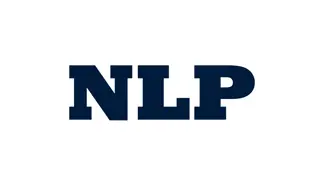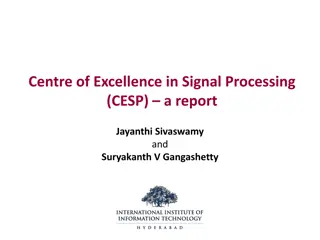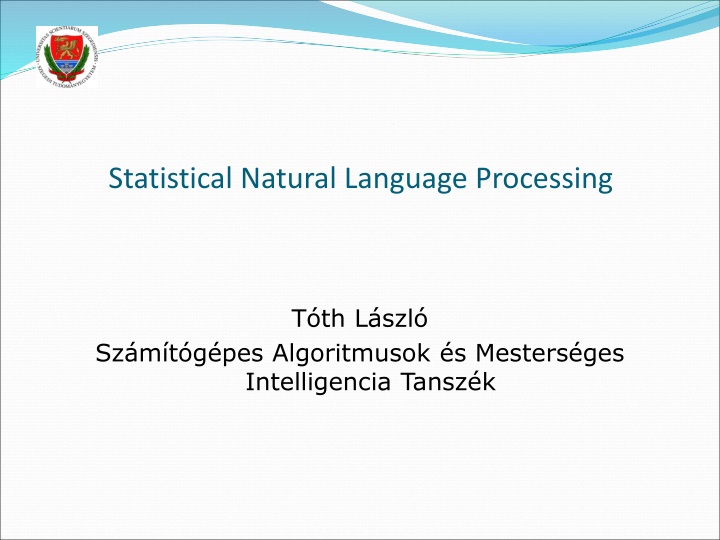
Challenges of Formal Language Models in Computational Linguistics
"Explore the limitations of formal language models in computational linguistics, focusing on drawbacks such as handling new words, syntactic errors, and the inability to describe entire natural languages. Discover why practical usability in NLP remains a challenge."
Download Presentation

Please find below an Image/Link to download the presentation.
The content on the website is provided AS IS for your information and personal use only. It may not be sold, licensed, or shared on other websites without obtaining consent from the author. If you encounter any issues during the download, it is possible that the publisher has removed the file from their server.
You are allowed to download the files provided on this website for personal or commercial use, subject to the condition that they are used lawfully. All files are the property of their respective owners.
The content on the website is provided AS IS for your information and personal use only. It may not be sold, licensed, or shared on other websites without obtaining consent from the author.
E N D
Presentation Transcript
Statistical Natural Language Processing T th L szl Sz m t g pes Algoritmusok s Mesters ges Intelligencia Tansz k
Formal language models By formal methods I will mean the formal, generative grammars proposed by Noam Chomsky Generative grammars, Chomsky language hierarchy, automata, context-free grammars, context-dependent grammars, The introduction of generative grammars brought revolutionary changes in many areas of linguistics since the a 60 s However, it also receives more and more critics as time goes by This theory has a lot of aspects from the point of linguistic, cognitive psychology, philosophy but here I will focus only on their practical usability in computational linguistics And from this aspect, formal languages does not seem to be the best approach I m going to list several arguments on the following slides
Drawbacks of formal language models There exists no formal language model for any natural language that would describe the whole language Creating formal grammars is very difficult even for small parts of the language Generative grammars describe a given state of the language, they are not able to handle the changes Their definition assumes, the set of terminals (in our case, words) to be given However, in natural languages we face new words almost each day the most trivial example is the case of proper nouns We, humans are usually able to decode a sentence even when it contains an unknown proper noun, eg. : Yesterday there was an earthquake in Bergamo, Italy Even if we have never heard about Bergamo, from the context we can guess that it must be a proper noun, a city name But a formal language would reject the whole sentence It would be impossible to prepare a natural language application for all possible names in the word (handling proper nouns or named entities is one of the most difficult topics in natural language processing)
Drawbacks of formal language models 2 In spontaneous communication syntactically incorrect sentences are surprisingly frequent This is true for speech (spontaneous conversations): incorrect sentences, word repetitions and re-starts, hesitation, and so on And also in written communication (blogs, chats, social media): incorrect sentences, typos, abbreviations and so on Researchers used controlled material (eg. Proof-read books of read texts) for a long time, so they realized this fact relatively lately Interestingly, in normal communication usually we don t even realize the presence of these errors (only when there are too many of them, so the message can t get through) But a formal grammar would not accept these syntactically incorrect sentences
Drawbacks of formal language models 3 Formal grammars model only the syntax of a sentence And they have only 2 levels : a sentence is either part of a language or not They don t care about semantics and pragmatics When two sentences are both correct, then they can t tell if one of them is more correct in the actual context or situation than the other See you later, professor or Hello, my darling Or when of the sentences is syntactically more probable then the other Computers can recognize speech vagy Computers can wreck a nice beach To support speech recognizers, a model that can return probabilities between 0-1 would be more useful than a model that return only 0 or 1 For example, when the acoustic model can t choose between two very similar sounding sentences, see previous example The Bayes decision rule I presented at the introduction of HMMs also assumes a language model that estimates P(w1 wn) Because of the reasons presented, we will use probabilistic language models
Statistical natural language modeling These approaches became popular from the 70-80 s after facing the failure of formal methods in practical applications Jelinek: "Every time I fire a linguist, the performance of the speech recognizer goes up". Nowadays, the majority of practical solutions are based on statistical methods instead of rule-based approaches We are going to create mathematical (statistical) models for the language or, at least, for a certain aspect of the language The model should be usable it should be able to describe the phenomenon it models But it should remain mathematically tractable, so is cannot be too complicated (see the steps of training and evaluation) We will find the optimal parameters of the model statistically, by performing machine learning on huge linguistic databases (called corpus in linguistics)
Statistical natural language modeling 2 The main types of application for these models: Language models: estimating the probability of a sentence (sequence of words) (this is what we need in speech recognition) Linguistic analysis or parsing: finding the most likely inner structure of a sentence (e.g. derivation tree) Estimating some abstract property of a word (e.g. semantic similarity) Some important application areas of statistical language models Speech recognition, chatbots Machine translation Text mining, eg. analysis of social media (extracting te opinion or the intent of the user), recommender systems, Advantages of statistical models They handle syntactics and semantics in one (in language modelling it is an advantage, in linguistic analysis it may be drawback in some cases) It is able to handle the input even when it was not seen during draining or is incorrect (it does not not reject such input, only assigns a lower probability) When it makes a mistake, it will be less harmful for the whole system (it will not reject the sentence, just assign a too small or large probability to it)
The main statistical properties of natural languages T th L szl Sz m t g pes Algoritmusok s Mesters ges Intelligencia Tansz k
Number of words Before starting statistical modelling, let s get familiar with the most important statistical properties of natural languages We will mostly talk abut English, and a little bit about Hungarian and German A seamingly simple question is, how many words do natural languages have? English: a word is anything that can occur between two spaces One word can take only 2-3 forms, eg. go-goes-went-gone, pen-pens English has a lot of local variants and dialects (and these might have words that are unfamiliar for the rest of the world) Hungarian: because of inflections, even the definition of word is not trivial Because of morphology, it is more correct to talk about word forms instead of words One noun can take about 700 forms! (similar morphologically rich languages are Turkish or Finnish; other European languages fall between English and Hungarian) There are many possible words forms that are syntactically correct, but are useless in practice shall we consider these as real words?? Different estimates on the number of words are quite different English: the number of word is somewhere between 150 000 and 2 million
Text Coverage The notion of covering is more precisely defined, so it is a more useful metric for language technology purposes Let s fix a dictionary with N words And take a huge text database with M text words (M is the number of word positions , so now the same word at a different position counts to be different) Covering calculates the percentage of the text words of M that are present in the dictionary Examples: All of Shakespeare s writings contain about 29000 different words An old examined the inner mailings of a large company, and it was found that 5-20 words are enough to achieve a covering rate of 90-98% (English!) This means that in English 5-20 words are enough for normal communication However, these 5000 are terribly domain-dependent The 5000 most frequent words od medical book will be very much different from the 5000 most frequent words of an engineering text
Dynamic coverage We refine the previous method for coverage: we create a dynamic dictionary We process the text from the left to the right The dictionary will be dynamic: it will always contain the most recent L different words of the text processed so far We check whether the next word is present in the dictionary or not If it is not, we add the word to the dictionary and remove the oldest word We define dynamic coverage as the average of the word-level coverages (0,1) Dynamic coverage values (by Jelinek) for the inner mailing of a company: "Text size needed to reach coverage : how long text was required on the average to find L different words (time distance between the oldest and the newest word). When increasing L, this value increases non-linearly, which means that the distribution of words in the corpus is very far from uniform
Word frequency distribution For a large enough corpus we can even display the frequency of each word (blue columns). X axis: frequency index (most frequent, second most frequent, ) Y axis: frequency (number of occurences) Zipf s law: the distribution is approximately 1/x (black curve) That is, x y constant power law , long-tail distribution Rude approximation (orange boxes): There a few words that are very frequent, and a lot of words that are very rare In practice, approximately half of the words occur only once The distribution is scale-invariant, so collecting a larger corpus does not help, the long tail remains: new, even more rare words will appear, with occurrence value of one This is very bad news with respect to statistical modelling So in statistical language modelling the law of there is no data like more data is even more true than in other areas of machine learning
What about Hungarian? A study compared the coverage rate of English, German and Hungarian All the corpora used contained 1-3 million text words 1 English, 1 German and 2 Hungarian corpora were compared Vertical axis: coverage Horizontal axis: dictionary size (obtained by taking the most frequent words of the corpus) (watch out, this axis is logarithmic!)
Coverage for Hungarian 2 Some values from the previous figure (numbers of words required to achieve a certain coverage rate): Conclusion: Compared to English, in German we need 4 times, in Hungarian 20 times lager corpus to attain the same coverage rate Presumably, this is the results of word inflection It would be interesting to see what would happen if we replaced the words by their stems (would be obtain a curve that is more similar to the curve of English?) Is it true that, on the average, we use only about 20 forms of the same word? So, for Hungarian, statistical modelling is more difficult than for English We could perform morphological decomposition on the words (in my house h z+am+ban)


